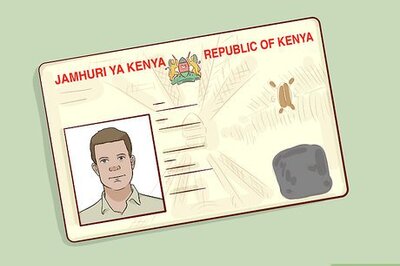
views
Every year at this time, people and businesses are notified of the legal requirement to submit their income tax returns (ITR) by the stipulated deadline. The deadline for reporting your ITR for the fiscal year 2022-23 or assessment year 2023-24 is July 31, 2023. Filing your income tax returns correctly involves claiming deductions and exemptions, accurately reporting your income and paying the correct amount of tax due.
The Income Tax Department understands the significance of encouraging taxpayers to save and invest their money. They have allowed numerous deductions in this respect under Chapter VI A of the Income Tax Act, which can assist individuals minimise their tax liability.
Also Read: Track Your ITR Status With Ease: Follow These Simple Steps After Filing Tax Return
The deduction under section 80C is one of the most common provisions for getting exemptions. Section 80C of the Income Tax Act permits you to lessen your taxable income and tax burden. It consists of a set of defined investment and payment alternatives that, when combined, can lower your taxable income by up to Rs 1.5 lakh. It is crucial to remember that while you can claim the deduction when you file your ITR, the actual investment or payment must be made during the applicable fiscal year.
Section 80C is divided into four subsections: 80CCC, 80CCD (1), 80CCD (1b), and 80CCD (2). Here’s an overview of what each part covers:
- 80C: Investments in Provident Funds such as EPF and PPF, equity linked saving schemes, life insurance premiums, payments made towards the principal sum of a home loan, Sukanya Samriddhi Yojana (SSY), Senior Citizen Savings Scheme (SCSS), National Savings Certificates (NSC), and more.
- 80CCC: Payments made towards pension plans, as well as certain mutual funds.
- 80CCD (1): Payments made towards government-backed schemes like the National Pension System (NPS) and Atal Pension Yojana (APY).
- 80CCD (1B): Investments in the National Pension System (NPS) of up to Rs 50,000.
- 80CCD (2): Employer’s contribution towards the National Pension System (NPS), up to 10 per cent of the basic salary and dearness allowance, if any.
To claim these deductions, you need to fill out the relevant information in the ITR-1 form. Part C of the third tab, ‘Computation of Income and Tax,’ provides a detailed break-up column where you can list the deductions applicable under various sections of the Income Tax Act.
If you are filing your ITR online, some of these details may be auto-filled from the information provided in Form 24Q, which is typically filled out by your employer.


















Comments
0 comment